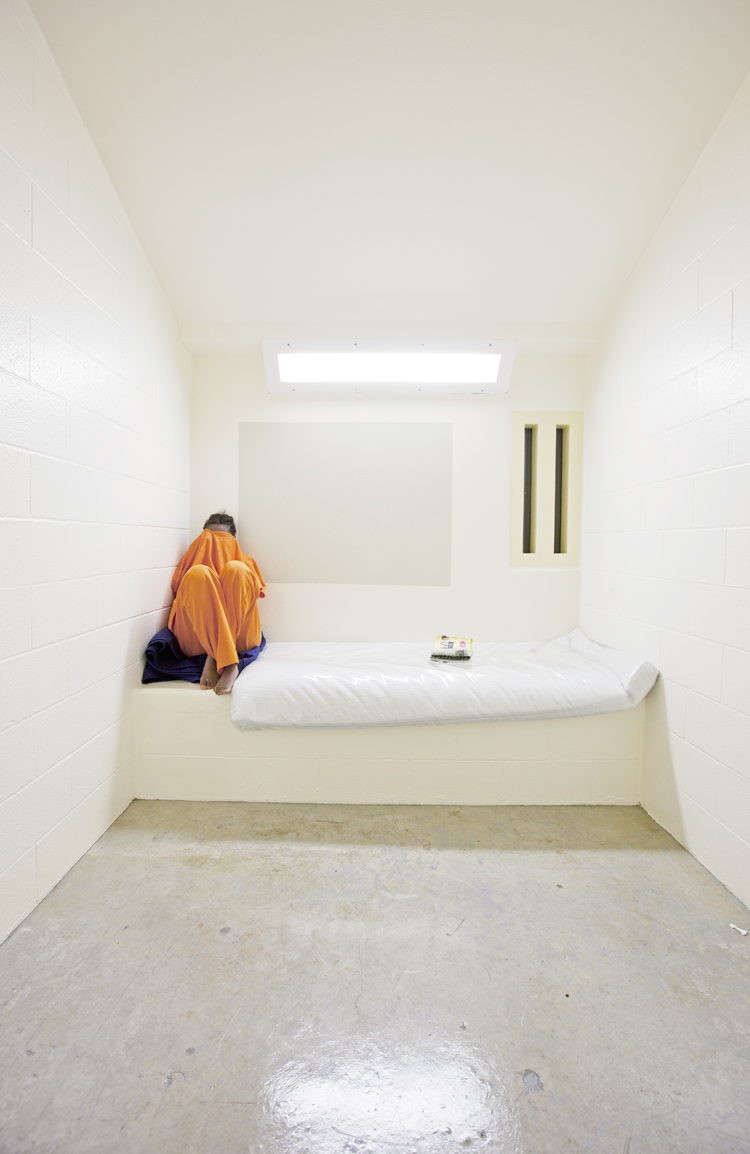By Richard Ross Cathy Woods is the assistant director of one of the more progressive juvenile detention centers in the United States: Tuscaloosa County Juvenile Detention Center in Alabama. Tuscaloosa isn’t just the home of the Crimson Tide or where George Wallace stood on the schoolhouse steps trying to thwart desegregation; it’s the location of a reasonably progressive, private juvenile hall.
The director’s corner office at the facility is decorated with Alabama pennants, “Roll Tide” accomplishments, autographs and bobbleheads of Bear Bryant. Through some unusual series of events, the day-to-day operation has defaulted to Woods, the assistant director, and her cadre of retired female schoolteachers.
Far from perfect, Tuscaloosa still shackles its children as they are transported from the hall to the enclosed family court next door and takes mattresses from the youth kept in solitary—of which there are too many. Their practices are outdated and this can’t be overlooked, but there’s something about the approach to rehabilitation here that it is unexpected.
Let me explain: across the country the majority of juvenile detention administrators and staff come from mixed backgrounds, often from local law enforcement or military posts. While the traditional tenets of juvenile justice have been rehabilitation, deterrence, and punishment, the rigid and militaristic approach staff bring from their previous professions makes punishment the default. Here in the heart of Alabama, there is a focus on nurturing and rehabilitation.
In the family courtroom next door, Woods sits in on every hearing. She takes the time to drive a girl who was in custody for sex trafficking to a shelter she found for her in Birmingham, and assists her in getting a job at Subway. The detention center is regularly visited by a goat, pig, pony, sheep and a chicken—hardened kids from the inner city are exposed to lives that need them and don’t prejudge them. The kids are forced to step outside of their comfort zones and are encouraged with praise when they are successful with new experiences. It is tempting to attribute this contrast in treatment to the female leadership of the facility, but to credit gender alone would prevent us from getting to the heart of what is so different about this approach.
AO9A1585
There is financial support from the community to assist with materials and equipment that couldn’t otherwise be obtained. The effort is spearheaded by Woods, who wears the hat of a smart politician and a development officer along with her official title of assistant director. Emotional support comes from staff within the facility as well as community members surrounding it, both providing attention and patience. There is so much going on here, all with the goal of nurturing the kids rather than punishing.
What they are still lacking and hoping to create is a shelter for kids that acts as an alternative to the detention center. Woods and the family court judge (also female) are adamant as to the need for this. There is only so much that can be done to enhance what a juvenile hall offers. The lack of a non-secure shelter is what all agree is a critical shortcoming. These women don’t want to create more punitive policy, they want to build a space where their kids can feel safe and protected.
Why is it that when searching for people to run juvenile detention facilities, we favor people with military backgrounds to those with teaching or counseling backgrounds? Is it such a radical idea that we hand over leadership of our juvenile detention facilities, perhaps even all detention and corrections facilities, to those who nurture and support rather than discipline and dismiss?
I wonder.




